Blockchain
Irys Raises $10M Series A to Unlock $3 Trillion Data Economy With First Programmable Datachain

CoinFund-Led Round Accelerates Institutional Adoption of Infrastructure For Datachains
Irys, the world’s first programmable datachain, today announced it has raised $10 million in Series A funding led by CoinFund, with participation from Hypersphere, Tykhe Ventures, Varrock Ventures, Breed VC, Echo Group, Amber Group, and WAGMI Ventures. The round brings Irys’s total funding to $20 million since 2024, demonstrating sustained investor confidence in programmable datachain infrastructure.
Irys is addressing a fundamental inefficiency in the global economy: the $3 trillion data market where virtually no one is able to capture value from the data they generate. By combining a high-performance data layer with a native smart contract execution layer, Irys enables data to carry embedded instructions for licensing, monetization, and access control – making it the first blockchain where data actively generates value for those who create it.
“The data economy has a massive infrastructure problem,” said Josh Benaron, CEO and Founder of Irys. “AI companies scrape trillions of dollars worth of content while creators see nothing. Enterprises sit on valuable datasets they can’t monetize. We’re building the infrastructure that finally allows data creators to capture the value they generate, turning data that historically is stored statically, into programmable economic assets.”
The round builds on significant traction with over 80 strategic partners focused on AI use cases, 600 million+ data transactions processed on the network, and 4 million+ active wallets engaging daily on the network. The platform’s infinite data capacity and predictable pricing model – anchored to physical storage costs rather than volatile token markets – has attracted institutional partners, including revenue-generating companies with proven business models. The funding will also accelerate infrastructure expansion, strategic partnerships, team growth, and institutional adoption of datachain technology ahead of Irys’s upcoming mainnet launch.
“Irys represents the infrastructure layer for the AI economy,” said Einar Braathen, Partner at CoinFund. “Where traditional approaches require piecing together multiple solutions, Irys has created unified infrastructure that makes data programmable. This is the AWS moment for onchain data.”
Irys’s approach is already generating significant institutional interest, with partners whose combined businesses represent hundreds of millions in revenue choosing the platform for critical infrastructure needs. This institutional adoption is driven by Irys’s technical advantages: unlike first-generation datachains that only provide static storage, Irys’s programmable data architecture enables smart contracts to read, modify, and act on stored data natively. This breakthrough allows for automated licensing agreements, verifiable AI training processes, and programmable intellectual property rights – capabilities impossible on existing blockchain infrastructure. Furthermore, Irys dramatically simplifies implementation—developers can get started in hours using familiar EVM-compatible tools, directly addressing the pain point found in legacy alternatives where integration can take months.
“This funding validates what our community has recognized: infrastructure that handles real revenue from real companies deserves serious institutional attention,” added Benaron. “We’re not waiting for adoption – we’re capturing it through partnerships that convert every enterprise data problem into permanent network volume that compounds over time.”
With over 500,000 community members across channels in over eight countries and partners that collectively generate hundreds of millions in revenue, choosing the platform for critical infrastructure needs, Irys is positioned to capture significant market share as the AI economy demands more sophisticated data infrastructure.
About Irys
Irys is the world’s first programmable datachain, combining verifiable data with native smart contract execution to create a foundation that’s optimized for storing, discovering, and monetizing data at any scale. With over 80 strategic partners, 600 million+ transactions processed, and 4 million+ daily active wallets, Irys aims to be the infrastructure that will one day contain all of humanity’s most critical information. Learn more at https://irys.xyz
About CoinFund
CoinFund is a blockchain investment firm focused on early-stage projects building foundational infrastructure for the decentralized economy. With a portfolio spanning DeFi, infrastructure, and Web3 applications, CoinFund partners with visionary teams creating the next generation of blockchain technology.
Blockchain
Bitcoin and BNB Analysis: Blazpay Phase 5 Launches as Investors Hunt for the Top Crypto Coins to Buy
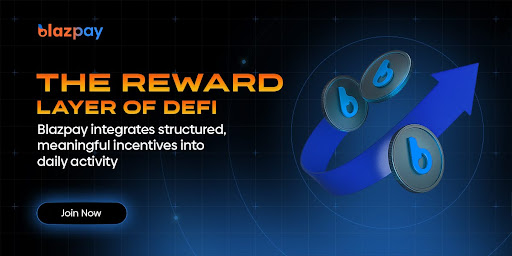
The crypto market continues to evolve with investors seeking high-potential tokens and utility-driven platforms. Among the best presale crypto opportunities, Blazpay stands out in Phase 5, attracting attention as one of the most promising AI crypto coins. Alongside established cryptocurrencies like Bitcoin and BNB, the presale offers an early entry point with asymmetric upside potential, making it a key focus for anyone evaluating the next crypto coins to buy
Blazpay Presale Phase 5 – The Smart Move for Crypto Investors
Blazpay has officially started Phase 5, with the price currently set at $0.0135 and scheduled to increase to $0.0135 after this phase closes. So far, 236M of the 249.04M BLAZ tokens have been sold, with $2.04M already raised. With AI-enhanced utilities, multichain support, and gamified services, Blazpay positions itself as a leading presale token among the best crypto presale platform options today.
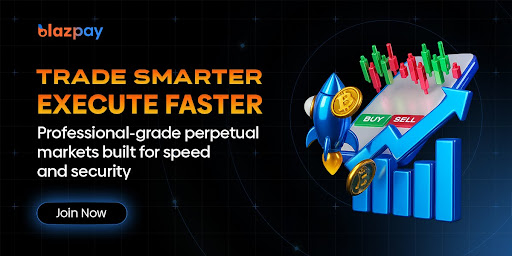
Gamified Rewards and Perpetual Trading Benefits
Blazpay’s ecosystem combines gamified engagement with perpetual trading options. Investors are incentivized to complete milestones, participate in AI-driven tasks, and maintain long-term activity within the platform. The integrated AI provides automated trading suggestions, while multichain connectivity ensures fast, low-fee transactions across networks, making Blazpay a unique AI crypto coin presale with tangible utility.
Blazpay Referral Program – Rewarding Early Advocates
The Blazpay referral system allows investors to earn rewards whenever their referrals participate in the presale. This creates a compounding incentive for early adopters to expand their network and increase their token allocation, especially valuable during Phase 5, where the price is set to rise shortly.
Blazpay Price Prediction – Growth Potential in 2025
Industry analysts suggest that Blazpay’s Phase 5 presale positions the token for potential substantial gains post-launch. With AI-driven utilities, gamified rewards, and growing investor demand, projections suggest Blazpay could achieve significant milestones relative to established cryptocurrencies. Early-phase investors are particularly well-positioned to capitalize on future price movements.
Blazpay $2,000 Strategy – Early Entry Advantage
A $2,000 purchase during Phase 5 at $0.0135 secures roughly 170,213 BLAZ tokens. If the token reaches $0.05, the position grows to $8,511. At $0.10, it rises to $17,021. Should Blazpay hit $0.25, the investment could be worth $42,553. This demonstrates the asymmetric upside for early participants, making Phase 5 a key entry window.
How to Buy BLAZ
To participate before the Phase 4 supply sells out:
- Visit the official Blazpay presale page
- Connect your wallet (MetaMask, Trust Wallet, Coinbase Wallet)
- Select your preferred currency (ETH, BNB, USDT, SOL)
- Enter the amount you want to purchase
- Confirm the transaction and claim tokens after launch
Bitcoin (BTC) – Leading Crypto Coin to Buy for Institutional Exposure
Bitcoin (BTC) is trading at approximately $87,822 USD as of December 17, 2025, up 1.63% from the previous day. The digital asset continues to dominate the market, offering investors exposure to a proven store of value and hedge against inflation. Despite being 17% below last year’s highs, BTC shows strong institutional interest, with long-term holder supply at an 8-month low of 14.34 million BTC. With potential ETF inflows and ongoing adoption, Bitcoin remains one of the top crypto coins to buy for those seeking stability with growth potential in the digital asset space.
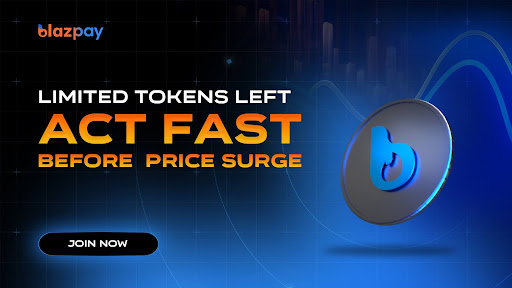
BNB – Established Blockchain Token Among Top Crypto Coins to Buy
BNB is holding steady around $857 USD, supported by $2.6 billion in 24-hour trading volume. The BNB Chain ecosystem continues expanding with initiatives like a new stablecoin targeting institutional usage, strengthening its utility in decentralized finance and trading platforms. While short-term fluctuations occur, BNB’s consistent network adoption and high liquidity make it a strong candidate among crypto coins to buy for investors looking to combine platform utility with long-term potential.
Conclusion
Blazpay’s Phase 5 presale offers investors the chance to access one of the most promising AI crypto coins early, with multichain utility and gamified rewards driving strong adoption. Complementing BTC’s store-of-value role and BNB’s utility-focused growth, this trio represents a strategic combination of new and established crypto assets. For investors seeking asymmetric potential alongside reliable blockchain leaders, Blazpay, Bitcoin, and BNB remain top crypto coins to buy in 2025.
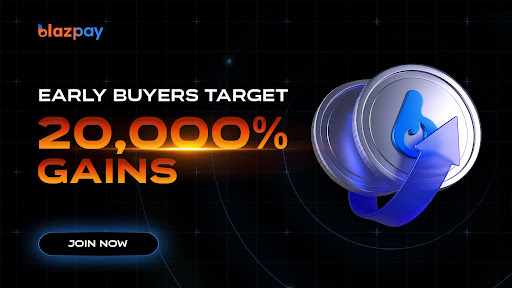
Join the Blazpay Community
Website: www.blazpay.com
Twitter: @blazpaylabs
Telegram: t.me/blazpay
FAQs
Q1. What makes Blazpay stand out among new crypto coins?
Its AI-enhanced automation, gamified services, and cross-chain capabilities differentiate it from traditional presale tokens.
Q2. How can I participate in Blazpay Phase 5?
Investors can buy BLAZ tokens via the official presale platform using the integrated steps for wallet connection and token purchase.
Q3. Why include Bitcoin and BNB in a presale portfolio?
BTC offers long-term stability, while BNB provides utility exposure in a major ecosystem, complementing early-stage tokens like Blazpay.
Q4. What is the risk/reward profile of Blazpay?
High potential upside due to Phase 5 presale pricing and AI-powered utility, balanced against typical early-stage crypto volatility.
Q5. How long until the next Blazpay price increase?
Phase 5 has just started, and the price will rise from $0.0135 to $0.0155 after completion.
Blockchain
DinoSol Debuts as a Meme-Driven Solana Token With Community-First Positioning

DinoSol (DINOSOL), a new entrant in the Solana meme-coin ecosystem, has launched with a strong emphasis on branding, simplicity, and early-stage community engagement. Built on Solana and centered around a playful, cartoon-styled dinosaur mascot, DinoSol joins the growing wave of culture-driven memecoins that leverage viral identity over utility-heavy roadmaps.
While still in its early development phase, DinoSol positions itself as a community-focused token aiming to expand through social momentum, low-cost Solana transactions, and a recognizable visual identity.
A Meme Coin Built on Solana’s High-Speed Infrastructure
DinoSol operates on the Solana blockchain, benefitting from fast, inexpensive transactions — a critical advantage for meme coin communities that thrive on rapid micro-trading, gifting, and community campaigns.
The project highlights accessibility as a core pillar: lightweight token mechanics, easy integration with Solana wallets, and a low barrier to entry for new users entering the meme token space.
Branding, Lore, and Community Identity
Unlike utility-first projects, DinoSol leans heavily on meme culture and its distinctive mascot. The design reflects exaggerated cartoon expressions, bright color themes, and a comedic aesthetic intended to resonate with viral crypto culture.
The branding suggests a lighthearted, entertainment-driven narrative — a key trait of recent memecoin successes.
DinoSol emphasizes community participation across its homepage and social channels, positioning the token as a collective movement rather than a structured technical product.
Tokenomics and Supply
Based on available public details, the token operates with a fixed supply model, a common approach in Solana meme tokens designed to reinforce scarcity and encourage early participation.
No complex staking, lockups, or reward mechanisms are described — aligning with its simplified meme-first positioning.
The focus remains on transparent supply, easy ownership, and frictionless trading.
Emerging Market Presence
As a newly listed asset on CoinMarketCap, DinoSol joins the expanding roster of Solana-based memecoins that have gained traction throughout 2025. While early trading metrics are still forming, interest has grown due to:
- Rapid community expansion
- Strong memeable branding
- Increasing visibility across Solana meme-fi culture
DINOSOL’s growth trajectory will depend largely on social momentum and how quickly the project can sustain community engagement.
Outlook
DinoSol is entering a highly active segment of the crypto market, where cultural resonance and simplicity often outweigh utility at launch. If meme sentiment on Solana continues to strengthen, DinoSol could benefit from the broader trend toward culture-and-community driven tokens.
For now, the project remains early-stage but well-positioned within Solana’s thriving meme ecosystem.
Blockchain
Blazpay AI Crypto Presale Announces Verified Audit as Phase 5 Surpasses $2.02M
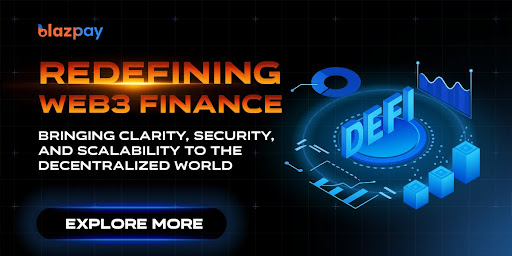
The Blazpay AI crypto presale continues to accelerate at an exceptional pace, crossing $2.02 million raised with 237.41 million BLAZ tokens sold out of 260.04 million in Phase 5 and reaching 91.3% completion. With the automatic price increase from $0.0135 approaching rapidly, Blazpay has now confirmed the successful completion of a full smart contract audit. This development amplifies investor confidence and positions Blazpay as one of the most secure, transparent, and high-potential projects in the AI crypto presale sector.
As the countdown to the Phase 5 price jump continues, audit verification has become the strongest catalyst driving new investors toward Blazpay, reinforcing its reputation as one of the best presale crypto opportunities and a clear top crypto to invest in for the upcoming AI-driven market cycle.
Audit Verification Brings Maximum Trust to the Blazpay Ecosystem
Blazpay’s verified audit confirms that its smart contracts, token mechanics, and operational frameworks meet the highest security standards. The audit report highlights that the system is free from critical vulnerabilities, and its AI orchestration layers meet strict transparency requirements. This level of validation is rare among early-stage blockchain projects and gives Blazpay a competitive advantage as the best crypto presale platform for investors seeking reliability alongside innovation.
The audit process examined the entire ecosystem, including the multi-chain settlement modules, the transactional infrastructure, and every segment of automated AI execution. The results confirm stability, efficiency, and immutability across the protocol, allowing investors to enter the AI crypto presale with confidence that contract logic and investor funds remain fully protected.
In a market where trust determines survival, Blazpay’s successful audit places it far ahead of non-audited competitors and positions it as one of the top crypto to invest in during this phase of the AI-powered blockchain expansion.
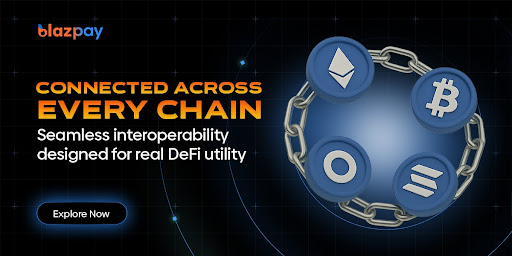
Why the Audit Strengthens Blazpay’s AI Utility Framework
Blazpay’s audit aligns directly with its expanding multi-utility AI ecosystem. The Conversational AI Execution engine enables users to interact with blockchain operations using natural language inputs, creating a frictionless AI-driven financial environment. The AI perpetual trading engine runs market analysis around the clock, delivering optimized trade execution without emotional interference. Blazpay’s multichain settlement network ensures smooth cross-chain movement of assets between Ethereum, BNB Chain, Polygon, and additional supported chains without depending on external bridges.
Developers have access to the Blazpay AI SDK, enabling the creation of AI-powered dApps, automation bots, and advanced infrastructure tools. The ecosystem also includes gamified AI rewards, encouraging user participation and continuous engagement.
These combined utilities gain significant credibility now that every operational module has been reviewed and verified by the audit, further elevating Blazpay as a leading AI crypto presale entering 2025.
Blazpay Price Forecast After Audit Verification
Analysts predict that the audit will strengthen Blazpay’s projected launch performance. The expected listing range for early 2025 sits between $0.03 and $0.05, supported by increasing demand and the completion of its AI utilities. Mid-term forecasts suggest a rise toward $0.15 to $0.25 by 2026 as the ecosystem gains real-world usage across decentralized applications and AI financial automation.
In a full market expansion, where AI tokens historically perform exceptionally well, Blazpay holds potential to reach the $0.75 to $1.00 zone. The audit outcome reinforces this projection by reducing risk and increasing investor confidence, solidifying Blazpay’s place among the best presale crypto investments of the current cycle.
$1,500 Audit-Backed Blazpay Accumulation Strategy
At the Phase 5 presale price of $0.0135, a $1,500 investment in Blazpay would secure approximately 111,111 BLAZ tokens. With audit-backed security, early participation comes with added confidence for investors positioning ahead of future price moves.
If Blazpay lists at $0.05, this allocation would be worth roughly $5,555. A rise to $0.25 in 2026 would increase the position to about $27,778, while a full bull-cycle surge to $0.75–$1.00 could elevate the value to between $83,333 and $111,111. The verified audit and structured presale make Blazpay a compelling high-upside option for AI-focused crypto investors.

How to Participate in the Blazpay AI Crypto Presale
- Visit www.blazpay.com
- Connect MetaMask or WalletConnect
- Choose USDT, ETH, or BNB
- Enter the amount you want to invest
- Confirm the transaction
Final Call Before the Price Increase
With Phase 5 now 91.3% complete and the price preparing to rise, this is one of the final opportunities to enter the AI crypto presale at an early rate supported by full audit verification. The audit eliminates uncertainty while Blazpay’s ecosystem continues expanding across multichain utility, AI automation, and developer integration. This combination positions Blazpay as one of the best presale crypto projects and one of the strongest candidates for investors seeking the best crypto presale platform before the next market surge.

Join the Blazpay Community
Website: www.blazpay.com
Twitter: @blazpaylabs
Telegram: t.me/blazpay
About Blazpay
Blazpay is an audited AI-powered blockchain ecosystem combining Conversational AI execution, automated perpetual trading, multichain interoperability, developer SDK integration, and gamified rewards under a unified network. Its newly verified audit ensures maximum transparency and security, making the Blazpay AI crypto presale one of the most secure and promising opportunities of 2025. With Phase 5 nearing completion and community growth accelerating, Blazpay stands out as a top crypto to invest in and one of the best presale crypto launches of the upcoming AI cycle.
-

 Crypto3 years ago
Crypto3 years agoCardalonia Aiming To Become The Biggest Metaverse Project On Cardano
-
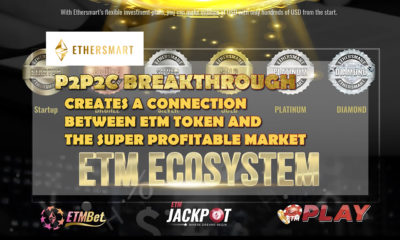
 Press Release5 years ago
Press Release5 years agoP2P2C BREAKTHROUGH CREATES A CONNECTION BETWEEN ETM TOKEN AND THE SUPER PROFITABLE MARKET
-
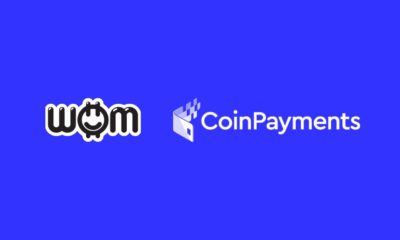
 Blockchain5 years ago
Blockchain5 years agoWOM Protocol partners with CoinPayments, the world’s largest cryptocurrency payments processor
-

 Press Release5 years ago
Press Release5 years agoETHERSMART DEVELOPER’S VISION MADE FINTECH COMPANY BECOME DUBAI’S TOP DIGITAL BANK
-
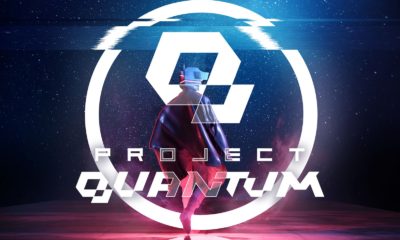
 Press Release5 years ago
Press Release5 years agoProject Quantum – Decentralised AAA Gaming
-
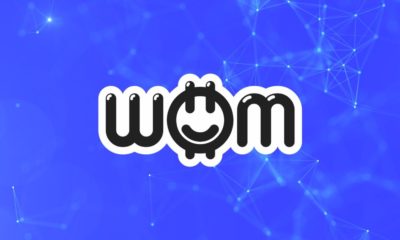
 Blockchain5 years ago
Blockchain5 years agoWOM Protocol Recommended by Premier Crypto Analyst as only full featured project for August
-
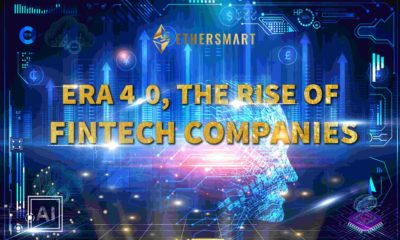
 Press Release5 years ago
Press Release5 years agoETHERSMART DEVELOPER’S VISION MADE FINTECH COMPANY BECOME DUBAI’S TOP DIGITAL BANK
-

 Blockchain6 years ago
Blockchain6 years ago1.5 Times More Bitcoin is purchased by Grayscale Than Daily Mined Coins






